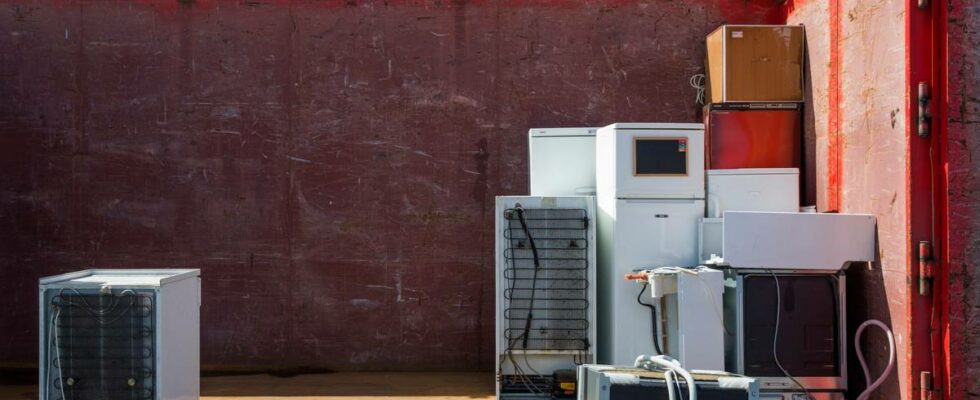Reading news about climate and the environment can often feel discouraging. We are not reaching our goals, we are unable to agree and we are already seeing the consequences of global warming. It is easy to become discouraged. But there are bright spots. A research report from the University of Bristol, published in the journal Nature, brings good news. Since 2021, the amount of the ozone-damaging gases HKFK in the atmosphere has decreased. That is five years earlier than expected, and the hole in the ozone layer can thus be closed faster than we thought. At the same time, the report shows that the gases have less effect on global warming. What happens when there is too much of certain gases in the atmosphere?HKFK, CO2 and CH4 … are you confused?Here is a quick introduction to some of the gases we humans release into the atmosphere, and what happens when we manage to cut the emissions. The ozone layer Gases such as CFCs and HKFCs contribute to thinning the ozone layer, often referred to as the “hole in the ozone layer”. The gases are also greenhouse gases, which contribute to global warming. A thinner ozone layer leads to increased UV radiation. Many were therefore concerned that the hole in the ozone layer would lead to skin cancer in people and damage to ecosystems. CO2 warms the globe CO2 is the most well-known greenhouse gas, also the one that has contributed the most to the earth becoming warmer since the industrial revolution. So far, the world has become around 1.2 degrees warmer. World leaders have promised to try to limit warming to 1.5 degrees. Other greenhouse gases Methane (CH4) and nitrous oxide (N2O) are also powerful greenhouse gases, which lead to much faster warming than CO2. But while CO2 remains in the atmosphere for a long time, methane disappears after just over ten years. This means that you can quite quickly get a cooling effect by cutting methane emissions. Cutting CO2 emissions primarily helps to prevent it from getting even hotter. Also the CFC and HCFC gases that damaged the ozone layer break down faster in the atmosphere than CO2. May have saved one degree Researcher in Cicero Øivind Hodnebrog says this is yet another proof that the Montreal Protocol from 1987 was a success. 189 countries agreed to take action when they saw that CFC substances were causing major damage to the ozone layer. The substances were found in refrigerators, air conditioners and hairspray. – It is estimated that depletion of the ozone layer would lead to several million additional cases of skin cancer. In addition, it is estimated that the protocol has saved us from as much as one degree of global warming by 2050, he says to news. When CFC substances were phased out in the 80s, they were replaced with the substances HKFK. These were also harmful to the ozone layer, but milder than their predecessor. Later, this drug was also phased out. – There are two negative effects associated with these HKFK gases. They break down the ozone layer, which protects us from harmful UV radiation, and they are powerful greenhouse gases that contribute to warming the earth, Hodnebrog explains. The ozone layer A gas layer of ozone found in the atmosphere It protects life on earth against UV rays from the sun The vast majority of ozone is located between 25 and 30 kilometers above the ground There is a continuous natural production and breakdown of ozone in the atmosphere, so that the thickness of the ozone layer is basically in balance Since the 1970s, people have become aware that this balance has been shifted towards a thinner ozone layer because we have produced ozone-depleting substances Source: Store norske lexikon One kilogram of emissions of the most common type of HKFK gas is 2000 times as powerful as one kilogram of CO₂ emissions, according to the researcher. But now the peak has been reached, and the amount of HKFK gas in the atmosphere is decreasing. – We absolutely must take all the victories we can get in the fight to limit climate change. The ozone layer seen from the International Space Station ISS. Photo: Nasa What can we learn? Although the climate scientist is positive, he is not sure if we will see a similar success story anytime soon. Hodnebrog believes part of the reason is that many experienced it as a more acute danger when the hole in the ozone layer became known. – There was probably more panic over the whole thing in the 80s. The risk of skin cancer probably frightened many. In this way, the substances were removed from refrigerators, air conditioners and hairspray. It only took a few years from the time one became aware of the consequences, until the world acted. At the same time, companies had replacement substances ready, so the economic impact was limited. Moving away from fossil energy is something else. – We have been doing that since the industrial revolution. Everything from industry, infrastructure, transport and so on is built around it. The ozone layer problem lasted for a much shorter time and covered many fewer emission categories. Nevertheless, Hodnebrog believes the agreement and the success from Montreal can be used as inspiration. – It is a good example that the world’s leaders can come together to not only set high goals, but actually implement measures and succeed in the objectives. Published 23.06.2024, at 14.45
ttn-69
Decrease in HKFK substances in the ozone layer five years ahead of schedule – news – Klima

